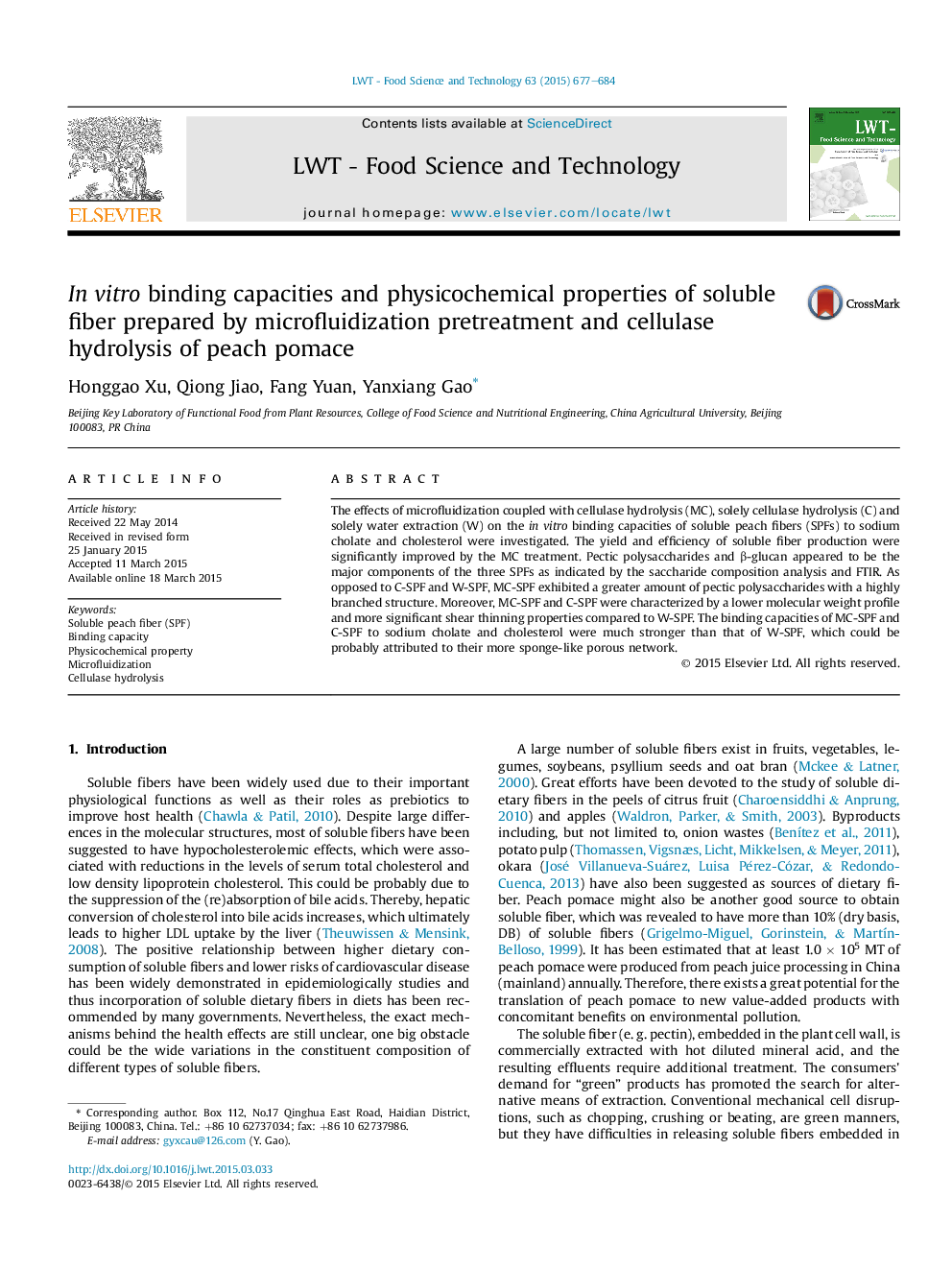| Article ID | Journal | Published Year | Pages | File Type |
|---|---|---|---|---|
| 6402191 | LWT - Food Science and Technology | 2015 | 8 Pages |
â¢Microfluidization pretreatment coupled with cellulase hydrolysis (MC) on soluble peach fiber (SPF) preparation was first reported.â¢Microfluidization pretreatment significantly improved the efficiency of cellulase hydrolysis on SPF preparation.â¢The sponge-like porous network of MC-SPF resulted in high binding capacity to sodium cholate and cholesterol.
The effects of microfluidization coupled with cellulase hydrolysis (MC), solely cellulase hydrolysis (C) and solely water extraction (W) on the in vitro binding capacities of soluble peach fibers (SPFs) to sodium cholate and cholesterol were investigated. The yield and efficiency of soluble fiber production were significantly improved by the MC treatment. Pectic polysaccharides and β-glucan appeared to be the major components of the three SPFs as indicated by the saccharide composition analysis and FTIR. As opposed to C-SPF and W-SPF, MC-SPF exhibited a greater amount of pectic polysaccharides with a highly branched structure. Moreover, MC-SPF and C-SPF were characterized by a lower molecular weight profile and more significant shear thinning properties compared to W-SPF. The binding capacities of MC-SPF and C-SPF to sodium cholate and cholesterol were much stronger than that of W-SPF, which could be probably attributed to their more sponge-like porous network.
